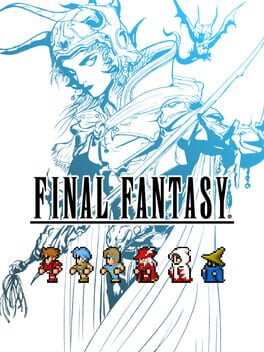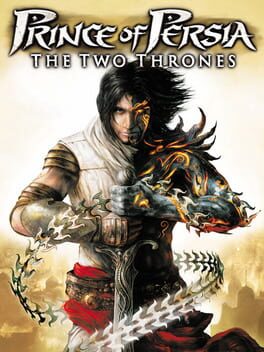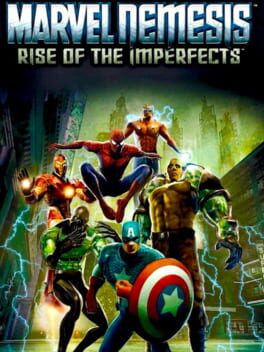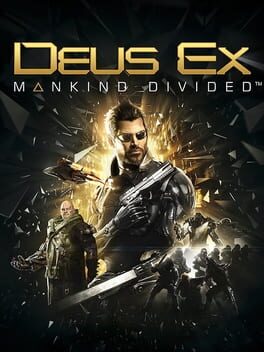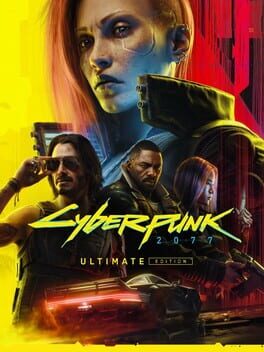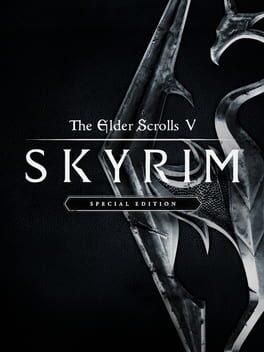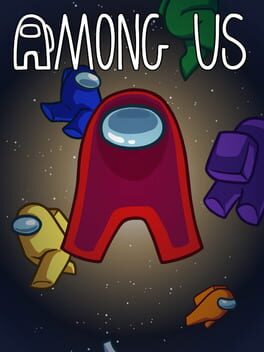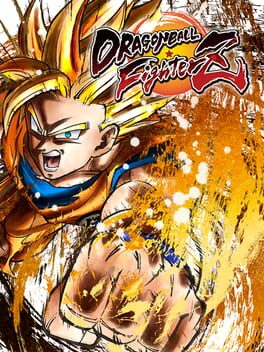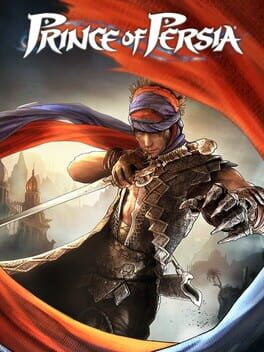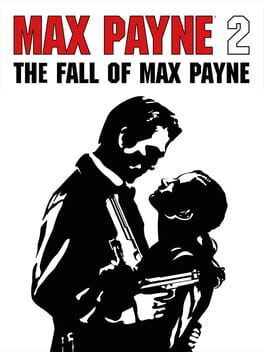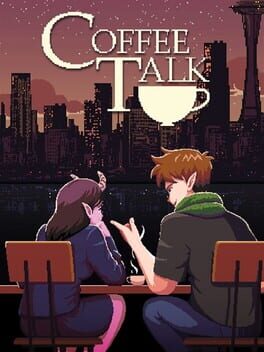Frascolli
168 Reviews liked by Frascolli
Final Fantasy
2021
Minha primeira vez jogando Final Fantasy, o Píxel Remaster tornou esse jogo bem mais tragável e eu acabei me divertindo bastante, apesar de alguns problemas de mecânicas (eu não aguentava mais enfrentar mob, queria um repelente igual no Pokémon pqp) e de progressão, já que o jogo não deixa muito claro qual o próximo passo que você deve da para progredir no jogo. O último boss eu achei difícilzinho, todos os outros inimigos foram tranquilos de enfrentar, mas o Caos... mas no todo o jogo é legal
Devil May Cry
2001
Graficamente é bonito pra época, a atmosfera dos cenários da ilha onde situa junto o castelo divide o sombrio e a fantasia e soundtracks com tensão, clássica e o rock que empolga. Uma história que foi ok pra um início e se consolidou, engraçado pensar que Dante na verdade é um Leon de cabelos brancos, e detalhe bem bobinho que eu vivia a dizer sobre os sons das portas que se abre pra outro cenário que foi reciclado de Resident Evil. Os controles são diferentes de DMC 3 o que me deixou confuso na época, além de que havia problemas sérios na câmera. Início muito bom de um baita hack n slash, assim segue até hoje diferente de muitas franquias que já abandonou o gênero.
Há uma evolução se comparar com o primeiro, sua ambientação é mais obscura, e as trilhas sonoras agora é meio nu metal que pra mim ficou do caralho por mais que me venha uma certa estranheza em se comparar os outros dois da trilogia. Na minha opinião vendo hoje, certamente não era pra funcionar com essas mudanças, mas ainda assim deu certo pois contém a jogabilidade de parkour que era sensacional.
One of the greatest tragedies of gaming is that this game will never get the sequel it needed.
The immaculate atmosphere and soundtrack return from Human Revolution and the stealth-action gameplay is the best it's ever been. Prague is a wonderfully detailed and dense hub and developers could really learn from it instead of making everything open world. The side missions are just as good as the main story missions and really make you explore all of Prague. The graphics are also spectacular even now. This is one of the most incredible looking games I've ever played.
Unfortunately this time around the story isn't quite as captivating. It attempts to capitalize on the real life social issues that were happening when the game came out, but the clunky writing makes the racism allegory a bit ham-fisted and gives the impression that the writers weren't confident enough in the game's own world. And once again, augmentation is the only issue that's ever on anyone's mind.
Adam Jensen also doesn't really carry the story on his own and needs other characters to bounce off of. One of my favourite parts of Human Revolution was interacting with Pritchard and Malik, but in Mankind Divided the only ally filling their role appears a mere handful of times and just isn't quite the same.
The story does technically have an ending, but it's rather unsatisfying as your job isn't really done. There's clearly still more to unravel, but sadly it looks like we're never getting the answers and this will be Adam's swan song. A tragedy indeed.
The immaculate atmosphere and soundtrack return from Human Revolution and the stealth-action gameplay is the best it's ever been. Prague is a wonderfully detailed and dense hub and developers could really learn from it instead of making everything open world. The side missions are just as good as the main story missions and really make you explore all of Prague. The graphics are also spectacular even now. This is one of the most incredible looking games I've ever played.
Unfortunately this time around the story isn't quite as captivating. It attempts to capitalize on the real life social issues that were happening when the game came out, but the clunky writing makes the racism allegory a bit ham-fisted and gives the impression that the writers weren't confident enough in the game's own world. And once again, augmentation is the only issue that's ever on anyone's mind.
Adam Jensen also doesn't really carry the story on his own and needs other characters to bounce off of. One of my favourite parts of Human Revolution was interacting with Pritchard and Malik, but in Mankind Divided the only ally filling their role appears a mere handful of times and just isn't quite the same.
The story does technically have an ending, but it's rather unsatisfying as your job isn't really done. There's clearly still more to unravel, but sadly it looks like we're never getting the answers and this will be Adam's swan song. A tragedy indeed.
Assombrado por um lançamento desastroso e precipitado, tendo seu conteúdo, embora fantástico, completamente ofuscado pelos inúmeros problemas técnicos, hoje, cerca de 3 anos depois, Cyberpunk 2077 ressurge como o colosso que deveria ter sido.
É fantástico poder revisitar Night City depois de todo esse tempo, e tenho ainda mais certeza de que essa é a cidade mais imersiva da história dos videogames, e provavelmente a minha favorita.
Night City é uma cidade que se alimenta de sonhos afundados em frustração, o cego desejo de se tornar uma lenda, alguém memorável, que logo se torna um pesadelo. Night City te quer morto, com uma promessa vazia de grandeza.
"𝘐 𝘫𝘶𝘴𝘵 𝘸𝘢𝘯𝘵 𝘵𝘩𝘦 𝘸𝘰𝘳𝘭𝘥 𝘵𝘰 𝘬𝘯𝘰𝘸 𝘐 𝘸𝘢𝘴 𝘩𝘦𝘳𝘦. 𝘛𝘩𝘢𝘵 𝘐 𝘮𝘢𝘵𝘵𝘦𝘳𝘦𝘥."
A expansão Phantom Liberty faz com que Cyberpunk chegue a um patamar altíssimo de qualidade, em todos os quesitos, e reforça ainda mais a estética e conceitos de tudo que se forma a partir desse trágico universo. Não existem finais felizes, não podem existir finais felizes, não para todos, não completamente.
Tudo o que nos resta é sobreviver. Buscar a sobrevivência, cegamente. Através da dualidade do desejo de ser lembrado para sempre pelos seus feitos e o constante medo de ter sua existência apagada, esquecida, a custo de nada.
𝘈 𝘵𝘩𝘪𝘯𝘨 𝘰𝘧 𝘣𝘦𝘢𝘶𝘵𝘺, 𝘐 𝘬𝘯𝘰𝘸
𝘞𝘪𝘭𝘭 𝘯𝘦𝘷𝘦𝘳 𝘧𝘢𝘥𝘦 𝘢𝘸𝘢𝘺
𝘞𝘩𝘢𝘵 𝘺𝘰𝘶 𝘥𝘪𝘥 𝘵𝘰 𝘮𝘦, 𝘐 𝘬𝘯𝘰𝘸
𝘚𝘢𝘪𝘥 𝘸𝘩𝘢𝘵 𝘺𝘰𝘶 𝘩𝘢𝘥 𝘵𝘰 𝘴𝘢𝘺
𝘉𝘶𝘵 𝘢 𝘵𝘩𝘪𝘯𝘨 𝘰𝘧 𝘣𝘦𝘢𝘶𝘵𝘺
… 𝘞𝘪𝘭𝘭 𝘯𝘦𝘷𝘦𝘳 𝘧𝘢𝘥𝘦 𝘢𝘸𝘢𝘺
É fantástico poder revisitar Night City depois de todo esse tempo, e tenho ainda mais certeza de que essa é a cidade mais imersiva da história dos videogames, e provavelmente a minha favorita.
Night City é uma cidade que se alimenta de sonhos afundados em frustração, o cego desejo de se tornar uma lenda, alguém memorável, que logo se torna um pesadelo. Night City te quer morto, com uma promessa vazia de grandeza.
"𝘐 𝘫𝘶𝘴𝘵 𝘸𝘢𝘯𝘵 𝘵𝘩𝘦 𝘸𝘰𝘳𝘭𝘥 𝘵𝘰 𝘬𝘯𝘰𝘸 𝘐 𝘸𝘢𝘴 𝘩𝘦𝘳𝘦. 𝘛𝘩𝘢𝘵 𝘐 𝘮𝘢𝘵𝘵𝘦𝘳𝘦𝘥."
A expansão Phantom Liberty faz com que Cyberpunk chegue a um patamar altíssimo de qualidade, em todos os quesitos, e reforça ainda mais a estética e conceitos de tudo que se forma a partir desse trágico universo. Não existem finais felizes, não podem existir finais felizes, não para todos, não completamente.
Tudo o que nos resta é sobreviver. Buscar a sobrevivência, cegamente. Através da dualidade do desejo de ser lembrado para sempre pelos seus feitos e o constante medo de ter sua existência apagada, esquecida, a custo de nada.
𝘈 𝘵𝘩𝘪𝘯𝘨 𝘰𝘧 𝘣𝘦𝘢𝘶𝘵𝘺, 𝘐 𝘬𝘯𝘰𝘸
𝘞𝘪𝘭𝘭 𝘯𝘦𝘷𝘦𝘳 𝘧𝘢𝘥𝘦 𝘢𝘸𝘢𝘺
𝘞𝘩𝘢𝘵 𝘺𝘰𝘶 𝘥𝘪𝘥 𝘵𝘰 𝘮𝘦, 𝘐 𝘬𝘯𝘰𝘸
𝘚𝘢𝘪𝘥 𝘸𝘩𝘢𝘵 𝘺𝘰𝘶 𝘩𝘢𝘥 𝘵𝘰 𝘴𝘢𝘺
𝘉𝘶𝘵 𝘢 𝘵𝘩𝘪𝘯𝘨 𝘰𝘧 𝘣𝘦𝘢𝘶𝘵𝘺
… 𝘞𝘪𝘭𝘭 𝘯𝘦𝘷𝘦𝘳 𝘧𝘢𝘥𝘦 𝘢𝘸𝘢𝘺
Zerei Skyrim incontáveis vezes no PS3, sem mods, e naquela época, era revolucionário para mim. Tantos lugares para explorar, NPCS para conhecer e inimigos para se enfrentar.
Hoje em dia, jogando as versões mais recentes no PC, tenho uma impressão ainda melhor do jogo.
Sim, o jogo é repleto de bugs, o que os MODS ajudam bem a melhorar, porém, não completamente. A maioria dos bugs de Skyrim são mais visuais e engraçados, com poucos sendo algo que quebra uma quest ou algo do tipo, e para os pouquíssimos assim, sempre existe um mod para consertar.
A trilha sonora do jogo é simplesmente sensacional, o dialogo com os NPCS, as side quests, tudo muito a frente de seu tempo. Uma obra-prima atemporal tornada divina com a adição dos melhores mods já criados em toda a história.
O combate original do jogo sempre foi meio paia, a maioria das pessoas sempre acabava apelando pro arqueiro stealth, porém, com adição de alguns mods, se torna um dos jogos RPG com o melhor sistema de combate de todos.
O que torna Skyrim realmente FENOMENAL não é apenas o jogo, mas sua insaciável comunidade, que até os dias de hoje, continuam tratando com amor e carinho essa íncrivel obra-prima de 2011.
Um jogo tão fantástico que, mesmo com a Bethesda sempre trazendo algum update pra ferrar com a vida dos criadores, seus jogadores se recusam a deixa-lo morrer.
Os diálogos de Skyrim são outro ponto impressionante do jogo, destacando alguns como os Greybeards, Paarthurnax, e até mesmo Alduin.
As vezes eu queria poder esquecer Skyrim só para poder joga-lo novamente, como se fosse a primeira vez.
Tempo de jogo: 554+ horas
Hoje em dia, jogando as versões mais recentes no PC, tenho uma impressão ainda melhor do jogo.
Sim, o jogo é repleto de bugs, o que os MODS ajudam bem a melhorar, porém, não completamente. A maioria dos bugs de Skyrim são mais visuais e engraçados, com poucos sendo algo que quebra uma quest ou algo do tipo, e para os pouquíssimos assim, sempre existe um mod para consertar.
A trilha sonora do jogo é simplesmente sensacional, o dialogo com os NPCS, as side quests, tudo muito a frente de seu tempo. Uma obra-prima atemporal tornada divina com a adição dos melhores mods já criados em toda a história.
O combate original do jogo sempre foi meio paia, a maioria das pessoas sempre acabava apelando pro arqueiro stealth, porém, com adição de alguns mods, se torna um dos jogos RPG com o melhor sistema de combate de todos.
O que torna Skyrim realmente FENOMENAL não é apenas o jogo, mas sua insaciável comunidade, que até os dias de hoje, continuam tratando com amor e carinho essa íncrivel obra-prima de 2011.
Um jogo tão fantástico que, mesmo com a Bethesda sempre trazendo algum update pra ferrar com a vida dos criadores, seus jogadores se recusam a deixa-lo morrer.
Os diálogos de Skyrim são outro ponto impressionante do jogo, destacando alguns como os Greybeards, Paarthurnax, e até mesmo Alduin.
As vezes eu queria poder esquecer Skyrim só para poder joga-lo novamente, como se fosse a primeira vez.
Tempo de jogo: 554+ horas
Among Us
2018
A prova definitiva de que um jogo não precisa ser muito complexo ou ter gráficos exuberantes para ser maravilhoso.
Tanto jogando com amigos quanto jogando em servidores públicos no Discord, a experiência é a mesma: DIVERSÃO simples e limpa.
O jogo, que já era muito bom, melhorou demais após a adição de classes, nada tão engraçado quanto gerar uma discórdia com um metamorfo ou passar a primeiro lambida naquele cara chato que faz direito e resolveu usar o jogo como ambiente de testes, fazendo-o quitar por não conseguir fazer seu chatíssimo monologo de 5 minutos após passar o jogo todo na sala de ADMIN.
Sem mais delongas: AMOGUS.
Tempo de jogo: 102+ horas
Tanto jogando com amigos quanto jogando em servidores públicos no Discord, a experiência é a mesma: DIVERSÃO simples e limpa.
O jogo, que já era muito bom, melhorou demais após a adição de classes, nada tão engraçado quanto gerar uma discórdia com um metamorfo ou passar a primeiro lambida naquele cara chato que faz direito e resolveu usar o jogo como ambiente de testes, fazendo-o quitar por não conseguir fazer seu chatíssimo monologo de 5 minutos após passar o jogo todo na sala de ADMIN.
Sem mais delongas: AMOGUS.
Tempo de jogo: 102+ horas
Dragon Ball FighterZ
2018
De longe o melhor jogo de luta de anime.
Os golpes e mecânicas de cada personagem refletem muito bem suas versões animadas, e a arte então... sem comentários.
Dá pra deixar o jogo ainda melhor com alguns Reshades e Mods, que transformam personagens do jogo em outros personagens que não estão disponíveis no jogo base.
Jogar com o Goku Instinto Superior, a música do torneio do poder tocando e os efeitos sonoros saídos direto do anime lhe dão uma sensação surreal de imersão na porradaria da franquia.
Tempo de jogo: 65 horas
Os golpes e mecânicas de cada personagem refletem muito bem suas versões animadas, e a arte então... sem comentários.
Dá pra deixar o jogo ainda melhor com alguns Reshades e Mods, que transformam personagens do jogo em outros personagens que não estão disponíveis no jogo base.
Jogar com o Goku Instinto Superior, a música do torneio do poder tocando e os efeitos sonoros saídos direto do anime lhe dão uma sensação surreal de imersão na porradaria da franquia.
Tempo de jogo: 65 horas
Prince of Persia
2008
A direção de arte é lindíssima e casa muito bem tanto que The Lost Crown segue a linha, e mais bonito, claro. É um reboot que deixa de lado o mais interessante da história da trilogia que são as areias do tempo. Seu parkour é bom, e o que pode te prender é a relação entre o Prince e a Elika que é bacana. O que me frustra é o combate agora limitado o que deixa ridículo de repetitivo, mas não era o foco em vista pelos números baixíssimos de inimigos que ainda por cima eram bem ruins.
The beginning of the Kain series started with a bang in 1996. So there shouldn’t be a problem with a sequel right? Oh, I wish. Turns out Silicon Knights(SK) who owned the IP filed a injunction against Crystal Dynamics(CD). We don’t need to get into the nitty gritty here, except to know they were able to make a sequel to Blood Omen(BO). This is important since Amy Hennig made her directorial debut here when previously she worked on BO. For those unfamiliar, she would go off to work on the Uncharted franchise later on. And she is crucial to understand, when I talk about the underlying problems I had with Soul Reaver(SR).
Moving forward in time to 2022. Square Enix(who acquired CD later on) sold their western studios. Eidos, Crystal Dynamics, and Square Enix Montreal for money. Among the plethora of IPs gathered. Two come to mind. Legacy of Kain and Soul Reaver. To none other than the Embracer company. Who has been laying off and closing down their recently bought studios as of late. So I'm here with a heavy heart to tell you guys if we don't see a remake/remaster officially, I will gently point you all towards an excellent Raina Audron’s HD Remaster for the Flycast Dreamcast emulator. Faithfully redone with higher quality textures as an appropriate unofficial alternative instead of waiting for one that may never come. Despite rumors of one in development.
And while there is a PC version on Steam. You cannot currently buy. And the sketchy PC mod doesn’t help matters which GOG is a part of as well. Excusing all those matters. I'll focus purely on the base game. Thankfully, you don’t need to play the previous entry to know what happens. They summarize the events that occurred before. Play it if you wish. I recommend it only for those seeking out why Kain acts the way he does in a Legend of Zelda spliced with a bloodsucker’s tale. The sequel continues the dark gothic storytelling fans have been waiting for. With a return to Nosgoth.
The supernatural setting we start our journey once more. Thousands of years after the events of the first. In the beginning cutscene. We see Raziel, a vampire lieutenant of Kain’s forces who has served him for a millennium. Who after receiving new wings in a fit of transformation. Kain inspects the new appendages while admiring them. Unfortunately, the new attachments did not endear him at all to his boss. Abruptly and forcefully rips the wings and orders his other lieutenants to cast him down into the abyss. An eternity passes and a mysterious voice resurrects our titular protagonist to become his ‘Soul Reaver.’ with a dreadfully cool new look and powers he’s off on a quest for vengeance against his former boss.
Will we face him in the end? Good question. Not sure. We’ll have to traverse through a 3D Metroidvania in a 3rd person perspective with no loading screens before we find our answers. And boy oh boy was this a welcome surprise. The gameplay has shifted in a whole new direction from the top-down perspective of the first installment. Overhauled to the teeth, maximizing numerous advantages of the 3D era. Our hero can move in any direction, jump higher than his base vault, glide in the air, hack and slash enemies. Hold any manner of weaponry without being subject to the gods of durability and throw them at any time. Capable of using mystical abilities like glyphs. The eldritch energy pertains to each element. Sparingly used, they provide a massive advantage against mobs of enemies. Heck one glyph can stop time for everyone excluding our dude! One innate ability is the power to shift between the material world into the spectral world and vice-versa. This sole skill changed the whole gameplay formula. And made my playthrough fascinating to test.
Plane shifting has massive benefits. For one. He has two health bars. As his health slowly depletes in the physical realm. He can apparate to the spectral realm and recover his health there. Incurring no HP penalty either. Dude can literally suck the souls from defeated enemies in either realm to restore his vitality. But that’s not all. Oh no. Both levels distort in weird ways. If he is in the physical domain and encounters an obstacle. All he has to do is switch to the other domain and voila! The path is open! I encountered multiple obstacles like jumping across chasms and unlocking a new path where previously a dead-end was in sight. Additionally, the ability allows one to go underwater without any penalty. Whereas going back to the real world causes Raziel to immediately transition to the other field. The mechanic works seamlessly when encountering puzzles. Usually, physical box placement is designed with several to a dozen steps or more to solve. Sometimes, CD will throw in a handful of switches and levers for good measure. For anyone who played Vagrant Story. The block elements are similar here. Where you’ll have to move them to open a new path or slot them in various places according to the imagery on the walls. Completing the art so to speak. Switches can run on timers, so phase-shifting to another dimension stops time. Making it instrumental if low on time. I didn’t have too much trouble with the puzzles. Controlling how to manage box placement was a bigger issue early on. Solvable once I read the manual. Perhaps one or two overstayed their welcome in a certain region. But the rest from then on felt balanced. A nice change of pace from the constant exploring.
Aside from the freedom to explore in any direction within reason. The boss encounters operate much like their predecessor. Being designed Legend of Zelda-like. As I defeated Raz's old brethren in various arenas I was struck once again by how I had to utilize the environment to my advantage and any tricks I learned prior. Picking up a weapon and slamming it at the boss once all appendages were gone. Use my plane-shifting powers to recuperate and find weaknesses and in some cases lure my opponent away like a rod and carrot stick for bait. They were fun to tackle and a nice reprieve from the Metroidvania world through Nosgoth’s moody areas. Gifting our main protagonist with new abilities. Thereby allowing the player to overcome obstacles with ease. Adding a gratifying reward upon completing a ‘dungeon’ before moving on to the next. And honestly? My motivation to exact retribution on Kain was still at an all-time high as I progressed through each boss encounter. I mean who wouldn’t if your past employer betrayed you in a heinous manner? Look at Raziel waving a “Me!” flag.
Before our hero kicks off a rant on vengeance I must talk about the world. Nosgoth has radically changed. Where previously it was teeming with life. Now it is a world of fear and decay. Gone are the bustling settlements of humans with a manic hatred for all things vampiric in nature. Iconic locations I sought with a wanderlust fervor, have withered away. Now nothing more than fables in the wind and myths of werewolves, ghosts, and ghouls have been reduced to fairy tales. Nosgoth of today. I dread walking and breathing these unfamiliar locales resembling more of a dark moody post-apocalypse as if someone sucked the very life from the land. Vampire creatures reign supreme. Each one is distinct from others based on their biome and clan affiliation. If you thought regular bloodsuckers were a threat. Wait till you see spider and water variants! EW! Humans are near extinct. With pockets of resistance thriving in some far-off places. However, entering such a place seems ill-advised since wide-open fields full of life are a very rare sight nowadays. Replaced with a foreboding harsh atmosphere accompanied by maze-like passages and decent platformer segments. I passed through empty caverns and short corridors while solving puzzle rooms to gain access to new glyph spells or by once defeating a boss in a main area am I endowed with a new traversal ability. Allowing one to venture onwards to new roads less traveled and hidden detours and shortcuts. Although, a new power doesn’t solve all my dilemmas. The spectral dimension is haunting, filled with a ghastly atmosphere that is both depressing and gloomy. A different color palette is injected every time Raziel shifts and with it, new ghostly enemies are summoned. To harm him like wraiths and bloodsucking dementor-like beings. Shudders. The territory makes the real and unreal more pronounced where things become larger or smaller as they appear. So have courage. To embrace the unfamiliar expanse whenever plane-shifting occurs.
The sound design is dynamic. Where a large chunk of my feelings is borderline dislike, except there's another big side of appreciating the technical achievement. The former is vexing and disconnecting in the soundscape. Feels largely oppressing in the foreground with low drums hitting a hypnotic rhythm as a faint choir chants in the background in intervals to imply the divine and further adds to the depressing, lonely, unsettling, creepy ambiance. In a dying world, I was fraught with anxiety wrapped in a tight ball around myself. Reminded me a bit of the soundscape of Silent Hill. However, this one felt less insidious and far more bearable in certain respects. Some select tracks are triumphant and give off a feeling of bravery in spite of the encompassing tracks displaying dread. Not a negative at all. I find it hard to say I like a majority of tracks while playing. On the other hand, I'm amazed by technological advancement. Looking at each piece. I’m amazed how the composer Kurt Harland from Information Society managed to create a vast library of tunes to work on and multiple variations. Whereas in the predecessor there were only nineteen tracks. Here we have one hundred eighty-one. That’s an insane improvement. And a new composer to boot! After listening to the entire game's soundtrack, I found it similar to how the works of Keichi Okabe and his studio band Monaca techniques in the franchise for Nier. From Okabe, the sound design when the soundtrack was ripped. Had dynamic, medium, quiet, no vocals, 8-bit versions for each location and iconic event. Not all of them, but I would say a good size. Allowing the player to smoothly segue into the following track. While not as seamless as Nier: Automata Harland's implementation in Soul Reaver, works similarly. Special thanks go out to Raina Audron who recorded and assembled the full depth of the OST in full so we can see how far Harland worked on composing 11 hours of music. From what Audron states. Each piece " indoors/outdoors (normal+suspenseful), puzzle, danger, and combat... changes dynamically according to the situation on the screen." Meaning we have a similar occurrence here with Okabe in creating multiple variations of a track. That is fascinating and honestly incredible to hear to this extent for a PSX title! As an example you can see most of the track listings here on YouTube. I am deeply amazed, surprised how largely unnoticed and underrated the sheer sound design permeates throughout. One largely not analyzed to an extent I’ve seen online. Curious if other IPs during the fifth-generation console era made comparable strides such as Harland and Okabe on impressive soundscape achievements.
As much as I love everything that Soul Reaver elevated from Blood Omen I do have some mixed feelings. And this isn’t a positive or a negative. Simply concerns I had during my playthrough that others may find useful to hear beyond the praise I sprouted above.
First, the story is a bit of a letdown. But narratively an improvement beyond BO's narrative. We don’t receive as many voiced monologues as the previous game. Telling a subtly compelling character development from the beginning to the very end, where we see Kain shift from a human into something far more sinister. Here we don’t get that as much. Missing lore drips. Voiced monologues of Raziel poetically waxing his thoughts both internally or externally to the player could've been far more utilized here than the sense of silence covering a large amount of distance. And this I feel is a missed opportunity to call back to the series' roots by detailing the story-telling through a voiced narrative. In the previous installment, Kain would narrate about items he finds and narrate their description to you upon cursor highlight. Effectively luring me further into the worldbuilding and NPCs. Speaking of NPCs, there's almost no one. Aside from one NPC and your new boss. Who will chime in at times to have a chat like a god speaking to his new disciple. Much like how the parasite speaks to Eddie Brock from the Venom(2018) film. Except the mysterious being isn't exactly within our titular guy. Somehow always with him, yet not physically.
Granted, he still opens their mouth at critical moments, usually during plot beats of cutscenes and during intro-boss battles. And to our new hero's credit, I resonated far more with him than his former employer. Pretty likable guy I initially thought would be far more angsty, moody full of hate. Far from it! The dude was focused and sought reason without letting his emotions boil over his spirit. Regardless of his dour appearance, Michael Bell's voice lends a unique cadence to bringing our wraith's character to life. Making my overall experience not so isolating. His actions mirror my incentive to push forward. In the face of desiring to know more about what happened to Kain. Anything deeper between their relationship? Were there any more reasons why he ripped the wings? Why has the world suffered like this further and why have clans of vampires which have risen to prominence and discussed a fair amount, thrown to the curbside? Speaking of being thrown onto the curb. The ending without going into spoilers feels unfulfilling a tad.
And this makes sense. According to Amy Hennig, SR1 suffered development troubles due to the injunction. Recent news started to arise about the edits of an unfinished product. Hennig set the record straight by stating in April of 2000. “...We simply just felt that we were compromising Kain's epic story by trying to cram too many major events into the last 10% of Soul Reaver.” - If I were in her position I would divide the game into two. She called this a “blessing in disguise” allowing the ideas, cut content, and story to flourish here rather than cramming everything and delaying. Her response felt appropriate and validated a lot of my disconcerting thoughts on the shortcomings I gathered upon finishing. And to be fair as a whole, I think the game is still fine for what her team tried to achieve. I'm grateful for what is already here and not rushed, broken, or horribly missing plot details I think were vital to know. A safe product at the end of the day without being too ambitious.
Second, loading any save file or dying. Has the player start from the 1st zone. This results in kinda of tedious backtracking for the unaware. You’ll need to use gates that act as a fast travel system to head to your next destination. Sadly they're only denoted by a symbol. And no menu is available or font to visualize where the path leads unless I walk through. Reminds me of Stargate. Lacking the wormhole loading. Rather you move forward without any delay or transition to another screen to load the new area. Pretty much an uninterrupted travel system. Thankfully, more often than not the waypoints are spread a decent amount from before entering a dungeon and before a boss encounter. I suggest copying the image and putting the pic on a Google Doc or notepad for reference. You can go traditional and draw the piece on paper to help! Vital to recall where I had already trodden. Should be noted dying in both dimensions returns the player to the start. Felt this wasn’t too punishing. Since you have plenty of time to recover vitality in either realm. Wasn't a drag either, I was able to adjust to the flow quickly.
Third, in a minor way, a hurdle may occur for the camera. It can take some getting used to. Though thankfully not a major hassle and you will fight it sometimes when fighting enemies and checking your surroundings. And I didn’t realize until midway I could quick turn by hitting the directional pad on the left or right and transitioning to first-person point of view mode to check my surroundings by hitting both L2 and R2 buttons. Useful to see the verticality in level design and any secrets tucked away.
Fourth, aside from no title markers when using gates to fast travel. or a hints menu. Hand-holding here is very minimal. Therefore, players must be aware of their sense of location. Keeping a map of Nosgoth helped tremendously and I'll post a link below to help newcomers. Didn't use it until I reached the 70% mark and after exhausting as much backtracking as I could without help. Keeping these details in mind, I think are crucial to progress further. One could speak to your new boss and another being you'll meet later on and apprise Raziel on his next objective. And that's the only gentle reminder of where to head out. Good idea to check again if you’re lost and need a gentle nudge. Though be warned, you may need to decipher the Shakespearean-like dialogue when given. Not a big deal, since they’ll reference past locations. And for a Metroidvania, I think they do a serviceable job toeing the line on not being too cryptic and not too easy, I need a journalist mode to persevere. Most if not all of my frustration was a consequence of rushing without thinking. I advise taking a step to re-collect your thoughts. Patiently recalling prior distinct areas visited to arrive at a sensibly achievable goal.
More than two decades ago, I had the pleasure of playing the title when I was a kid. Never finished it since I was very confused about my true objective. And I vividly remember my first impressions. Badass FMV in the beginning, hot meh on nearly everything else. Confusing passages, dull color palettes, and a combat system that felt clunky. Now as an adult revisiting. I'm on the opposite spectrum for my first impressions. Where now I think its not meh. The confusion is still there, though tempered with patience and a drive to explore the gloomy post-apocalyptic world with some platforming segments. Nosgoth’s murky setting is a stark contrast to the lively world from before. Adding incentive to my vengeful goal of what happened here. A decent combat system that can take some getting used to along with the camera still left me completely enthralled in the presentation. The voiced narrative continues to be strong although lessened by switching to a new protagonist, but is equally as fascinating to learn about. The solid writing continues to leave me hungry to know more about the underlying narrative. Satisfying and self-contained to an extent like the Trails or Xenoblade games. The first delved into a nuance-filled story about a human who becomes a vampire and struggles with darker impulses. A shadowy tale in a dimly lit fantasy environment. SR meanwhile flips the scripts and asks the confused avenger Raziel to embark on a quest for vengeance. And understandably so! Man was betrayed by his employer after faithfully serving him for a millennium. Only to be betrayed because he had wings and Kain did not?! WELL SEE HER- Coughs. Anyway, I think the Dreamcast remaster is a great way for anyone looking to dive into the series nowadays rather than resorting to a sketchy PC mod. Emulation or playing via console are also fine choices. While I did have some mixed feelings, muddling my final thoughts. Ultimately they're not as egregious as my time in Blood Omen. Thus Soul Reaver is a worthy gateway to try for folks interested in a seamless 3D metroidvania with a rare shifting mechanic followed by an uncommonly gothic story in the Legacy of Kain saga.
8/10
References and additional material:
1998 - Knights fight for Kain article - injunction
2022 - Square Enix sells off IPs and studios
2023 - Embracer & layoffs throughout the year
Dreamcast remaster of Soul Reaver 1
Rumors for an official remaster
Sketchy Soul Reaver PC mod
Raina Audron's work on Soul Reaver 1. Quote is from a readme
2000 - Soul Reaver Response - Amy Hennig responds to reports about the game being unfinished.
—
Helpful Links - Map of Nosgoth - Incomplete OST - Setting summary of Nosgoth - Spoiler-free SR1 walkthrough - Before I play tips on SR1 - There was no section previously. So I submitted my own tips. Hope this helps any newcomers!
Who owns the Legacy of Kain IP?
Moving forward in time to 2022. Square Enix(who acquired CD later on) sold their western studios. Eidos, Crystal Dynamics, and Square Enix Montreal for money. Among the plethora of IPs gathered. Two come to mind. Legacy of Kain and Soul Reaver. To none other than the Embracer company. Who has been laying off and closing down their recently bought studios as of late. So I'm here with a heavy heart to tell you guys if we don't see a remake/remaster officially, I will gently point you all towards an excellent Raina Audron’s HD Remaster for the Flycast Dreamcast emulator. Faithfully redone with higher quality textures as an appropriate unofficial alternative instead of waiting for one that may never come. Despite rumors of one in development.
And while there is a PC version on Steam. You cannot currently buy. And the sketchy PC mod doesn’t help matters which GOG is a part of as well. Excusing all those matters. I'll focus purely on the base game. Thankfully, you don’t need to play the previous entry to know what happens. They summarize the events that occurred before. Play it if you wish. I recommend it only for those seeking out why Kain acts the way he does in a Legend of Zelda spliced with a bloodsucker’s tale. The sequel continues the dark gothic storytelling fans have been waiting for. With a return to Nosgoth.
The supernatural setting we start our journey once more. Thousands of years after the events of the first. In the beginning cutscene. We see Raziel, a vampire lieutenant of Kain’s forces who has served him for a millennium. Who after receiving new wings in a fit of transformation. Kain inspects the new appendages while admiring them. Unfortunately, the new attachments did not endear him at all to his boss. Abruptly and forcefully rips the wings and orders his other lieutenants to cast him down into the abyss. An eternity passes and a mysterious voice resurrects our titular protagonist to become his ‘Soul Reaver.’ with a dreadfully cool new look and powers he’s off on a quest for vengeance against his former boss.
Will we face him in the end? Good question. Not sure. We’ll have to traverse through a 3D Metroidvania in a 3rd person perspective with no loading screens before we find our answers. And boy oh boy was this a welcome surprise. The gameplay has shifted in a whole new direction from the top-down perspective of the first installment. Overhauled to the teeth, maximizing numerous advantages of the 3D era. Our hero can move in any direction, jump higher than his base vault, glide in the air, hack and slash enemies. Hold any manner of weaponry without being subject to the gods of durability and throw them at any time. Capable of using mystical abilities like glyphs. The eldritch energy pertains to each element. Sparingly used, they provide a massive advantage against mobs of enemies. Heck one glyph can stop time for everyone excluding our dude! One innate ability is the power to shift between the material world into the spectral world and vice-versa. This sole skill changed the whole gameplay formula. And made my playthrough fascinating to test.
Plane shifting has massive benefits. For one. He has two health bars. As his health slowly depletes in the physical realm. He can apparate to the spectral realm and recover his health there. Incurring no HP penalty either. Dude can literally suck the souls from defeated enemies in either realm to restore his vitality. But that’s not all. Oh no. Both levels distort in weird ways. If he is in the physical domain and encounters an obstacle. All he has to do is switch to the other domain and voila! The path is open! I encountered multiple obstacles like jumping across chasms and unlocking a new path where previously a dead-end was in sight. Additionally, the ability allows one to go underwater without any penalty. Whereas going back to the real world causes Raziel to immediately transition to the other field. The mechanic works seamlessly when encountering puzzles. Usually, physical box placement is designed with several to a dozen steps or more to solve. Sometimes, CD will throw in a handful of switches and levers for good measure. For anyone who played Vagrant Story. The block elements are similar here. Where you’ll have to move them to open a new path or slot them in various places according to the imagery on the walls. Completing the art so to speak. Switches can run on timers, so phase-shifting to another dimension stops time. Making it instrumental if low on time. I didn’t have too much trouble with the puzzles. Controlling how to manage box placement was a bigger issue early on. Solvable once I read the manual. Perhaps one or two overstayed their welcome in a certain region. But the rest from then on felt balanced. A nice change of pace from the constant exploring.
Aside from the freedom to explore in any direction within reason. The boss encounters operate much like their predecessor. Being designed Legend of Zelda-like. As I defeated Raz's old brethren in various arenas I was struck once again by how I had to utilize the environment to my advantage and any tricks I learned prior. Picking up a weapon and slamming it at the boss once all appendages were gone. Use my plane-shifting powers to recuperate and find weaknesses and in some cases lure my opponent away like a rod and carrot stick for bait. They were fun to tackle and a nice reprieve from the Metroidvania world through Nosgoth’s moody areas. Gifting our main protagonist with new abilities. Thereby allowing the player to overcome obstacles with ease. Adding a gratifying reward upon completing a ‘dungeon’ before moving on to the next. And honestly? My motivation to exact retribution on Kain was still at an all-time high as I progressed through each boss encounter. I mean who wouldn’t if your past employer betrayed you in a heinous manner? Look at Raziel waving a “Me!” flag.
Before our hero kicks off a rant on vengeance I must talk about the world. Nosgoth has radically changed. Where previously it was teeming with life. Now it is a world of fear and decay. Gone are the bustling settlements of humans with a manic hatred for all things vampiric in nature. Iconic locations I sought with a wanderlust fervor, have withered away. Now nothing more than fables in the wind and myths of werewolves, ghosts, and ghouls have been reduced to fairy tales. Nosgoth of today. I dread walking and breathing these unfamiliar locales resembling more of a dark moody post-apocalypse as if someone sucked the very life from the land. Vampire creatures reign supreme. Each one is distinct from others based on their biome and clan affiliation. If you thought regular bloodsuckers were a threat. Wait till you see spider and water variants! EW! Humans are near extinct. With pockets of resistance thriving in some far-off places. However, entering such a place seems ill-advised since wide-open fields full of life are a very rare sight nowadays. Replaced with a foreboding harsh atmosphere accompanied by maze-like passages and decent platformer segments. I passed through empty caverns and short corridors while solving puzzle rooms to gain access to new glyph spells or by once defeating a boss in a main area am I endowed with a new traversal ability. Allowing one to venture onwards to new roads less traveled and hidden detours and shortcuts. Although, a new power doesn’t solve all my dilemmas. The spectral dimension is haunting, filled with a ghastly atmosphere that is both depressing and gloomy. A different color palette is injected every time Raziel shifts and with it, new ghostly enemies are summoned. To harm him like wraiths and bloodsucking dementor-like beings. Shudders. The territory makes the real and unreal more pronounced where things become larger or smaller as they appear. So have courage. To embrace the unfamiliar expanse whenever plane-shifting occurs.
The sound design is dynamic. Where a large chunk of my feelings is borderline dislike, except there's another big side of appreciating the technical achievement. The former is vexing and disconnecting in the soundscape. Feels largely oppressing in the foreground with low drums hitting a hypnotic rhythm as a faint choir chants in the background in intervals to imply the divine and further adds to the depressing, lonely, unsettling, creepy ambiance. In a dying world, I was fraught with anxiety wrapped in a tight ball around myself. Reminded me a bit of the soundscape of Silent Hill. However, this one felt less insidious and far more bearable in certain respects. Some select tracks are triumphant and give off a feeling of bravery in spite of the encompassing tracks displaying dread. Not a negative at all. I find it hard to say I like a majority of tracks while playing. On the other hand, I'm amazed by technological advancement. Looking at each piece. I’m amazed how the composer Kurt Harland from Information Society managed to create a vast library of tunes to work on and multiple variations. Whereas in the predecessor there were only nineteen tracks. Here we have one hundred eighty-one. That’s an insane improvement. And a new composer to boot! After listening to the entire game's soundtrack, I found it similar to how the works of Keichi Okabe and his studio band Monaca techniques in the franchise for Nier. From Okabe, the sound design when the soundtrack was ripped. Had dynamic, medium, quiet, no vocals, 8-bit versions for each location and iconic event. Not all of them, but I would say a good size. Allowing the player to smoothly segue into the following track. While not as seamless as Nier: Automata Harland's implementation in Soul Reaver, works similarly. Special thanks go out to Raina Audron who recorded and assembled the full depth of the OST in full so we can see how far Harland worked on composing 11 hours of music. From what Audron states. Each piece " indoors/outdoors (normal+suspenseful), puzzle, danger, and combat... changes dynamically according to the situation on the screen." Meaning we have a similar occurrence here with Okabe in creating multiple variations of a track. That is fascinating and honestly incredible to hear to this extent for a PSX title! As an example you can see most of the track listings here on YouTube. I am deeply amazed, surprised how largely unnoticed and underrated the sheer sound design permeates throughout. One largely not analyzed to an extent I’ve seen online. Curious if other IPs during the fifth-generation console era made comparable strides such as Harland and Okabe on impressive soundscape achievements.
As much as I love everything that Soul Reaver elevated from Blood Omen I do have some mixed feelings. And this isn’t a positive or a negative. Simply concerns I had during my playthrough that others may find useful to hear beyond the praise I sprouted above.
First, the story is a bit of a letdown. But narratively an improvement beyond BO's narrative. We don’t receive as many voiced monologues as the previous game. Telling a subtly compelling character development from the beginning to the very end, where we see Kain shift from a human into something far more sinister. Here we don’t get that as much. Missing lore drips. Voiced monologues of Raziel poetically waxing his thoughts both internally or externally to the player could've been far more utilized here than the sense of silence covering a large amount of distance. And this I feel is a missed opportunity to call back to the series' roots by detailing the story-telling through a voiced narrative. In the previous installment, Kain would narrate about items he finds and narrate their description to you upon cursor highlight. Effectively luring me further into the worldbuilding and NPCs. Speaking of NPCs, there's almost no one. Aside from one NPC and your new boss. Who will chime in at times to have a chat like a god speaking to his new disciple. Much like how the parasite speaks to Eddie Brock from the Venom(2018) film. Except the mysterious being isn't exactly within our titular guy. Somehow always with him, yet not physically.
Granted, he still opens their mouth at critical moments, usually during plot beats of cutscenes and during intro-boss battles. And to our new hero's credit, I resonated far more with him than his former employer. Pretty likable guy I initially thought would be far more angsty, moody full of hate. Far from it! The dude was focused and sought reason without letting his emotions boil over his spirit. Regardless of his dour appearance, Michael Bell's voice lends a unique cadence to bringing our wraith's character to life. Making my overall experience not so isolating. His actions mirror my incentive to push forward. In the face of desiring to know more about what happened to Kain. Anything deeper between their relationship? Were there any more reasons why he ripped the wings? Why has the world suffered like this further and why have clans of vampires which have risen to prominence and discussed a fair amount, thrown to the curbside? Speaking of being thrown onto the curb. The ending without going into spoilers feels unfulfilling a tad.
And this makes sense. According to Amy Hennig, SR1 suffered development troubles due to the injunction. Recent news started to arise about the edits of an unfinished product. Hennig set the record straight by stating in April of 2000. “...We simply just felt that we were compromising Kain's epic story by trying to cram too many major events into the last 10% of Soul Reaver.” - If I were in her position I would divide the game into two. She called this a “blessing in disguise” allowing the ideas, cut content, and story to flourish here rather than cramming everything and delaying. Her response felt appropriate and validated a lot of my disconcerting thoughts on the shortcomings I gathered upon finishing. And to be fair as a whole, I think the game is still fine for what her team tried to achieve. I'm grateful for what is already here and not rushed, broken, or horribly missing plot details I think were vital to know. A safe product at the end of the day without being too ambitious.
Second, loading any save file or dying. Has the player start from the 1st zone. This results in kinda of tedious backtracking for the unaware. You’ll need to use gates that act as a fast travel system to head to your next destination. Sadly they're only denoted by a symbol. And no menu is available or font to visualize where the path leads unless I walk through. Reminds me of Stargate. Lacking the wormhole loading. Rather you move forward without any delay or transition to another screen to load the new area. Pretty much an uninterrupted travel system. Thankfully, more often than not the waypoints are spread a decent amount from before entering a dungeon and before a boss encounter. I suggest copying the image and putting the pic on a Google Doc or notepad for reference. You can go traditional and draw the piece on paper to help! Vital to recall where I had already trodden. Should be noted dying in both dimensions returns the player to the start. Felt this wasn’t too punishing. Since you have plenty of time to recover vitality in either realm. Wasn't a drag either, I was able to adjust to the flow quickly.
Third, in a minor way, a hurdle may occur for the camera. It can take some getting used to. Though thankfully not a major hassle and you will fight it sometimes when fighting enemies and checking your surroundings. And I didn’t realize until midway I could quick turn by hitting the directional pad on the left or right and transitioning to first-person point of view mode to check my surroundings by hitting both L2 and R2 buttons. Useful to see the verticality in level design and any secrets tucked away.
Fourth, aside from no title markers when using gates to fast travel. or a hints menu. Hand-holding here is very minimal. Therefore, players must be aware of their sense of location. Keeping a map of Nosgoth helped tremendously and I'll post a link below to help newcomers. Didn't use it until I reached the 70% mark and after exhausting as much backtracking as I could without help. Keeping these details in mind, I think are crucial to progress further. One could speak to your new boss and another being you'll meet later on and apprise Raziel on his next objective. And that's the only gentle reminder of where to head out. Good idea to check again if you’re lost and need a gentle nudge. Though be warned, you may need to decipher the Shakespearean-like dialogue when given. Not a big deal, since they’ll reference past locations. And for a Metroidvania, I think they do a serviceable job toeing the line on not being too cryptic and not too easy, I need a journalist mode to persevere. Most if not all of my frustration was a consequence of rushing without thinking. I advise taking a step to re-collect your thoughts. Patiently recalling prior distinct areas visited to arrive at a sensibly achievable goal.
More than two decades ago, I had the pleasure of playing the title when I was a kid. Never finished it since I was very confused about my true objective. And I vividly remember my first impressions. Badass FMV in the beginning, hot meh on nearly everything else. Confusing passages, dull color palettes, and a combat system that felt clunky. Now as an adult revisiting. I'm on the opposite spectrum for my first impressions. Where now I think its not meh. The confusion is still there, though tempered with patience and a drive to explore the gloomy post-apocalyptic world with some platforming segments. Nosgoth’s murky setting is a stark contrast to the lively world from before. Adding incentive to my vengeful goal of what happened here. A decent combat system that can take some getting used to along with the camera still left me completely enthralled in the presentation. The voiced narrative continues to be strong although lessened by switching to a new protagonist, but is equally as fascinating to learn about. The solid writing continues to leave me hungry to know more about the underlying narrative. Satisfying and self-contained to an extent like the Trails or Xenoblade games. The first delved into a nuance-filled story about a human who becomes a vampire and struggles with darker impulses. A shadowy tale in a dimly lit fantasy environment. SR meanwhile flips the scripts and asks the confused avenger Raziel to embark on a quest for vengeance. And understandably so! Man was betrayed by his employer after faithfully serving him for a millennium. Only to be betrayed because he had wings and Kain did not?! WELL SEE HER- Coughs. Anyway, I think the Dreamcast remaster is a great way for anyone looking to dive into the series nowadays rather than resorting to a sketchy PC mod. Emulation or playing via console are also fine choices. While I did have some mixed feelings, muddling my final thoughts. Ultimately they're not as egregious as my time in Blood Omen. Thus Soul Reaver is a worthy gateway to try for folks interested in a seamless 3D metroidvania with a rare shifting mechanic followed by an uncommonly gothic story in the Legacy of Kain saga.
8/10
References and additional material:
1998 - Knights fight for Kain article - injunction
2022 - Square Enix sells off IPs and studios
2023 - Embracer & layoffs throughout the year
Dreamcast remaster of Soul Reaver 1
Rumors for an official remaster
Sketchy Soul Reaver PC mod
Raina Audron's work on Soul Reaver 1. Quote is from a readme
2000 - Soul Reaver Response - Amy Hennig responds to reports about the game being unfinished.
—
Helpful Links - Map of Nosgoth - Incomplete OST - Setting summary of Nosgoth - Spoiler-free SR1 walkthrough - Before I play tips on SR1 - There was no section previously. So I submitted my own tips. Hope this helps any newcomers!
Who owns the Legacy of Kain IP?
Coffee Talk
2020
Inside
2016
Playdead não decepcionou com Limbo, e não seria com Inside que isso aconteceria. Belos seis anos de trabalho.
Uma frase que poderia definir tal jogo, pelo menos na minha visão, seria "o desconhecido chega a ser divertido". Não sabia de nada sobre ele e sendo bem sincero até agora tô tentando entender a estória... se é que tem uma de fato ou se os criadores quiseram que nós interpretássemos da nossa maneira.
A gameplay se baseia em game de plataforma com puzzles. Nós controlamos um garoto em um mundo bem hostil e bizarro onde teremos que passar por diversos desafios em busca de algo.
Enquanto em Limbo (spoilers para quem não jogou ou assistiu sobre) nós estamos em busca de nossa irmã, em Inside somos apresentados ao seu universo, do que ele é composto e sua natureza.
Em nenhum momento, repito, em NENHUM momento do jogo somos apresentados a algum texto ou diálogo. Apenas os cenários, NPC's e suas ações nos contam uma estória (ou tentam).
Não senti nenhum cansaço por conta dos puzzles, muito pelo contrário, eles se unem tão bem com "o que deve ser feito" e "o que eu posso fazer?" Não são desafiadores, vai por mim.
Chega a ser bem intuitivo e adicionam na narrativa com espaço para interpretação.
Os gráficos a princípio não parecem serem grande coisa, mas conforme você vai avançando acaba percebendo que caiu no conto de "Quantos detalhes, hein? há quanto tempo aquilo está ali? Que coisa é aquela no fundo? Calma, volta, vi algo... não dá pra voltar, corre!" e assim sucessivamente.
E o jogo usa bem seu ambiente 3D para um personagem (de certa forma) 2D, eles casam bastante.
O som foi um fator que me prendeu bastante. Recomendo fones de ouvido.
Não existem tantas músicas em Inside, mas ele cobre essa falta com seus sons ambientes bem feitos. As músicas servem mais para construir a atmosfera de cada área ou qual sentimento o nosso personagem está sentindo no momento como medo ou tensão, e isso também serve de aviso ao jogador para ele tentar agir rapidamente.
Mesmo que nosso personagem não tenha um rosto, ainda assim ele consegue se expressar bem através de seu corpo.
Eu achei bem natural as mudanças de cenários que vamos encontrando ao longo da gameplay. É algo tão dinâmico que você às vezes só segue em frente para saber o que virá.
Mas cuidado, a curiosidade pode matar o gato.
E às vezes precisamos morrer para entendermos o que deve ser feito naquele instante.
O jogo é curto, fazendo você gastar apenas 2h ou 2h e 30min no máximo.
Mas caso queira estender esse tempo, existem áreas secretas que, ao encontrarmos certos objetos neles, desbloqueiam um final alternativo. É uma motivação ao fator replay.
Inside reforçou ainda mais o meu pensamento de que um jogo não precisa ter muitas horas de duração para se mostrar capaz e deixar uma memória em quem jogou.
Um jogo indie ambicioso onde cada puzzle ensina de maneira indireta as mecânicas (simples) e narrativa.
Ele não se repete, coloca o jogador em momentos de tensão bem colocados (até hoje lembro daquela... coisa na água), suas animações e física são bem feitas, seus cenários são minimalistas, dá dicas ambíguas sobre seu universo e faz você ficar incrédulo/agoniado/confuso com toda a sequência final.
Uma frase que poderia definir tal jogo, pelo menos na minha visão, seria "o desconhecido chega a ser divertido". Não sabia de nada sobre ele e sendo bem sincero até agora tô tentando entender a estória... se é que tem uma de fato ou se os criadores quiseram que nós interpretássemos da nossa maneira.
A gameplay se baseia em game de plataforma com puzzles. Nós controlamos um garoto em um mundo bem hostil e bizarro onde teremos que passar por diversos desafios em busca de algo.
Enquanto em Limbo (spoilers para quem não jogou ou assistiu sobre) nós estamos em busca de nossa irmã, em Inside somos apresentados ao seu universo, do que ele é composto e sua natureza.
Em nenhum momento, repito, em NENHUM momento do jogo somos apresentados a algum texto ou diálogo. Apenas os cenários, NPC's e suas ações nos contam uma estória (ou tentam).
Não senti nenhum cansaço por conta dos puzzles, muito pelo contrário, eles se unem tão bem com "o que deve ser feito" e "o que eu posso fazer?" Não são desafiadores, vai por mim.
Chega a ser bem intuitivo e adicionam na narrativa com espaço para interpretação.
Os gráficos a princípio não parecem serem grande coisa, mas conforme você vai avançando acaba percebendo que caiu no conto de "Quantos detalhes, hein? há quanto tempo aquilo está ali? Que coisa é aquela no fundo? Calma, volta, vi algo... não dá pra voltar, corre!" e assim sucessivamente.
E o jogo usa bem seu ambiente 3D para um personagem (de certa forma) 2D, eles casam bastante.
O som foi um fator que me prendeu bastante. Recomendo fones de ouvido.
Não existem tantas músicas em Inside, mas ele cobre essa falta com seus sons ambientes bem feitos. As músicas servem mais para construir a atmosfera de cada área ou qual sentimento o nosso personagem está sentindo no momento como medo ou tensão, e isso também serve de aviso ao jogador para ele tentar agir rapidamente.
Mesmo que nosso personagem não tenha um rosto, ainda assim ele consegue se expressar bem através de seu corpo.
Eu achei bem natural as mudanças de cenários que vamos encontrando ao longo da gameplay. É algo tão dinâmico que você às vezes só segue em frente para saber o que virá.
Mas cuidado, a curiosidade pode matar o gato.
E às vezes precisamos morrer para entendermos o que deve ser feito naquele instante.
O jogo é curto, fazendo você gastar apenas 2h ou 2h e 30min no máximo.
Mas caso queira estender esse tempo, existem áreas secretas que, ao encontrarmos certos objetos neles, desbloqueiam um final alternativo. É uma motivação ao fator replay.
Inside reforçou ainda mais o meu pensamento de que um jogo não precisa ter muitas horas de duração para se mostrar capaz e deixar uma memória em quem jogou.
Um jogo indie ambicioso onde cada puzzle ensina de maneira indireta as mecânicas (simples) e narrativa.
Ele não se repete, coloca o jogador em momentos de tensão bem colocados (até hoje lembro daquela... coisa na água), suas animações e física são bem feitas, seus cenários são minimalistas, dá dicas ambíguas sobre seu universo e faz você ficar incrédulo/agoniado/confuso com toda a sequência final.
